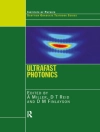This book discusses geometric and mathematical models that can be used to study fluid and structural mechanics in the cardiovascular system. Where traditional research methodologies in the human cardiovascular system are challenging due to its invasive nature, several recent advances in medical imaging and computational fluid and solid mechanics modelling now provide new and exciting research opportunities. This emerging field of study is multi-disciplinary, involving numerical methods, computational science, fluid and structural mechanics, and biomedical engineering. Certainly any new student or researcher in this field may feel overwhelmed by the wide range of disciplines that need to be understood.
This unique book is one of the first to bring together knowledge from multiple disciplines, providing a starting point to each of the individual disciplines involved, attempting to ease the steep learning curve. This book presents elementary knowledge on the physiology of the cardiovascular system; basic knowledge and techniques on reconstructing geometric models from medical imaging; mathematics that describe fluid and structural mechanics, and corresponding numerical/computational methods to solve its equations and problems.
Many practical examples and case studies are presented to reinforce best practice guidelines for setting high quality computational models and simulations. These examples contain a large number of images for visualization, to explain cardiovascular physiological functions and disease. The reader is then exposed to some of the latest research activities through a summary of breakthrough research models, findings, and techniques.
The book’s approach is aimed at students and researchers entering this field from engineering, applied mathematics, biotechnology or medicine, wishing to engage in this emerging and exciting field of computational hemodynamics modelling.
Innehållsförteckning
Computational hemodynamics – an introduction.- The human cardiovascular system.- Geometric model reconstruction.- Fundamentals of hemodynamics.- Computational fluid structure interaction.- Generation of computational mesh for hemodynamics analysis.- Case studies of the human cardiovascular system.- Applications of fsi for cardiovascular hemodynamics.- Advanced topics and future trends.












